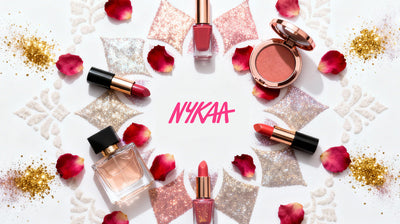In This Article
In a universe filled with coffee shops, Starbucks is not just an espresso house but a cultural icon. The green mermaid on your cup means more than just a hit of caffeine. It’s comfort, connection, belonging. For millions around the world, Starbucks is as much about identity as a drink, a quotidian ritual that feels comfortingly consistent no matter what city you’re in.
But how did a coffee company become more than just purveyors of beans, building a global community around emotion, habit and culture?
From Commodity to Community
Coffee is among the world’s oldest and most fiercely fought-over commodities. And competing solely on taste or price will only get you so far before it turns into a race to the bottom. Starbucks learned early that you couldn’t build loyalty on better beans alone. In a market ruled by deals and discounts, it needed to do the trick that is demanded of all advertising now: Make people feel something more profound.
Instead, the company recast its central question from “How do we sell more coffee?” to “How do we create a situation where people feel at home here?” That pivot- from selling a product to designing an experience- would define everything that came after.
The ‘Third Place’ That Was Everywhere
Starbucks popularized the idea of a “third place” which isn’t home or work but something in between. It’s a place where people can pause, connect and experience a quiet sense of belonging.” The store design, music and reclining chairs were all selected to provide a sense of warmth, familiarity and maybe suggest something that slightly outstripped the ordinary.
Baristas knew names and drinks, transforming a routine transaction into a little ritual. Writing a customer’s name on a cup — scribbling it, calling it out loud and staying within earshot until someone called back “Vanilla latte!” in answer — was not just good service: It was psychology at play.” These little, human touches established emotional recognition and trust. That sense of recognition gradually became part of the Starbucks experience.
The Power of Science: Habit and Reward
Starbucks didn’t just stop at emotional design, it was ahead of the game in habit psychology.
The brand developed discreet mechanisms of pleasure and advancement through its mobile app and rewards program. With each purchase made, “stars” are earned, providing a small sense of reward and progress. Push notifications, birthday perks and seasonal drinks all provide triggers encouraging customers to come back.
It’s a classic habit loop:
-
Cue - morning urge or notification from app
-
Regular - have your favorite beverage ordered
-
Reward - starts, bonuses, and more bragging rights
It is a frictionless, deeply satisfying process. As time goes on, it ceases to be a preference; rather, Starbucks becomes among the ritualized acts of life.
Designing for Belonging: Ritual, Status, and Storytelling
-
What makes Starbucks so different from a run-of-the-mill rewards program is that it mixes progress, status and shared storytelling.
-
Tiered Rewards: Green status, Gold- Levels of customer engagement transform into a reward system with which people can work on unlocking.
-
Personalization: The app will remember what you usually order, give you birthday offers and celebrate milestones.
-
Shared Rituals: Limited-edition drinks, ‘Double Star Days’ and seasonal launches aren’t merely sales ploys - they are shared cultural experiences.
-
Storytelling: Each campaign ties into a larger story about creativity, connection and community.
It didn’t form a sense of belonging through slogans, but through thousands of tiny consistent gestures that make every customer feel like they’re part of a club.
Results That Speak Volumes
In the U.S., Starbucks Rewards generates more than half of company revenue. Its app is one of the world’s daily active users when it comes to food and beverage.
Frequent customers shop more often and spend more per visit. Studies have demonstrated that more than 75% of frequent Starbucks patrons view the company with an emotional connection, according to their sense of self, not just for its coffee. Some even bypass other cafés to bask in the sense of relief that their name evokes and the sight of that recognizable green cup.
Lessons for Brand Builders
-
Change Transactions into Traditions: No detail is too small when it comes to those touch points that can make customers feel special, such as personalized cards, etc. Bring the warmth of a vintage family store with the personal approach each customer will remember.
-
Visibilize Loyalty: Gameify engagement and publicly acknowledge good customers.
-
Build for Belonging: Design your own “third place,” physical or digital, where customers feel safe and seen.
-
Tap Into Emotion: Share narratives linked by shared feelings of comfort, connection or celebration.
-
Automate, but not with cold: Use technology to make things easy but keep the warmth of the human touch.
The Takeaway
And Starbucks is proof that people want more than caffeine; they want connection. Every cup is more than just a product: it’s an invitation to belong.
When brands do plumb more than transactions and construction experiences that inspired, uniform, and emotionally dense, customers don't just return to them they are them.
That’s the psychology of belonging in a cup, served hot and one order at a time.




